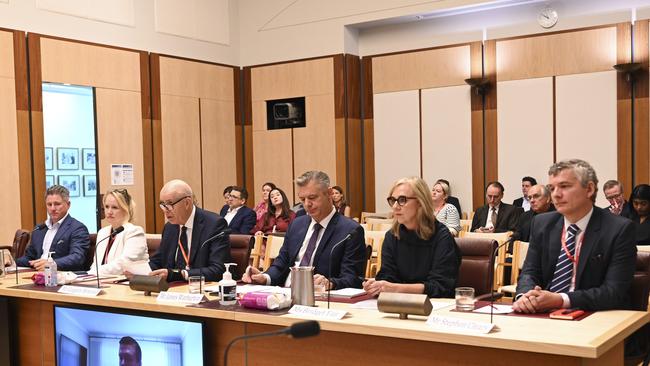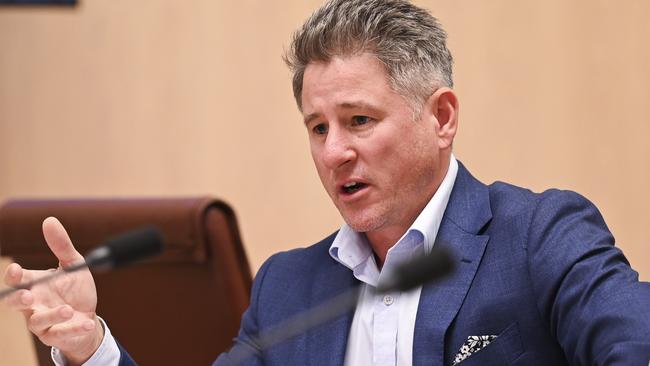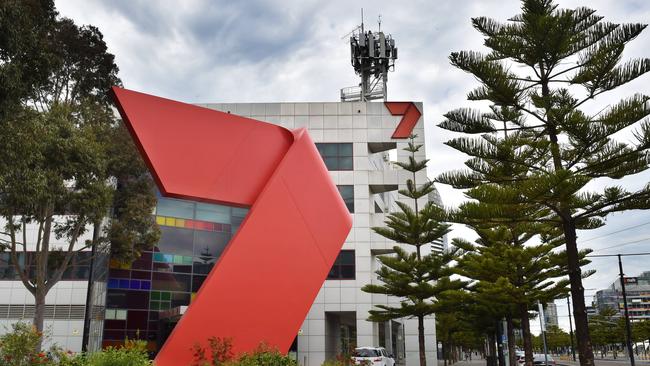
Some 19 months ago under the heading “Connected threat to free TV’s “rivers of gold’ I warned that Australia was on the brink of a major decline in free-to-air television because of the likely market share increases of connected TV or BVOD (Broadcast Video On Demand) where Nine operates via 9Go!.
But since then the challenges facing free to air television have multiplied.
Back in 2022 what made me realise the power BVOD advertising was what happened to Josh Frydenberg in the seat of Kooyong.
One of the reasons Frydenberg lost was that his Teal challenger Monique Ryan used BVOD television advertisements targeted at the postcodes in the electorate.
Ryan’s victory dramatically illustrated the power of digital television.
At that time, share markets were not alarmed but notes to the 2024 Nine Entertainment interim report revealed that the cracks caused by BVOD and other digital television operators were widening. Nine shares immediately fell 8.7 per cent.
Both in Australia and in world markets free-to-air television will survive but its future revenue and profit levels are likely to be much lower.
I can’t imagine how the Ten network can survive in this environment with only a 16 per cent market share. Sporting codes that see free to air television as a “cash cow” will need to realise that in a few years the cow is likely to have a lot less cash to milk.

Because Nine has the old Fairfax business, the Stan operation, and radio, it is the best placed of the networks to manage the likely free to air decline.
To understand what’s ahead for free to air TV when it operates in a digital market I must take you back to the days when newspapers like The Age, Sydney Morning Herald and Courier Mail were huge cash producers via employment, real estate and car classified advertisements. These advertisements were termed “rivers of gold”.
Then in the late 1990s came the internet and digital classifieds.
Initially the newspapers believed that any leakage of print classifieds to the net would see revenue simply shift to their internet sites.
Many newspaper executives believed that overall revenue would be maintained or increased. They were wrong.
People changed to internet classified advertising at much lower prices. New entrants such as Seek, REA and Car Sales entered the market so that the newspaper internet sites no longer dominated.
There was also a dramatic fall in print advertising and the “rivers of gold” became a trickle and for a time it seemed that many newspapers had a limited life.
But, most of the majors survived because readers were prepared to buy the digital editorial content in newspapers thus opening up a new source of revenue. But the classified advertising-based newspapers that survived were usually far less profitable.
As in print classifieds, initially the Nine, Seven and Ten networks established connected TV/ BVOD outlets and they dominated the sector. But again, like the internet classifieds, the network’s BVOD advertising revenue per viewer was much less than free to air.
Again like the classifieds, new non-BVOD digital forces have emerged to challenge Nine, Seven and Ten both in their free-to-air and BVOD operations. And these new forces are global and are accelerating the digitisation of the total television market. They include YouTube, Netflix, Disney, Amazon Prime and Paramount Plus.
All have began selling advertising on their sites and sometimes reducing subscription prices to viewers who accept advertisements. The newcomers are currently small but in the next few years they will totally transform advertising.

Last year 9Now, 7Plus, Amazon prime and Disney each had roughly the same Australian audience size. But the Netflix Australian streaming video audience is about equal to the combination of 9Now and 7Plus.
Then comes YouTube which is bigger again.
But, as happened in classified advertisements, the free-to-air networks will have a much lesser share of the total video/TV market. And per person revenue from their 9Now, 7Plus and similar audiences will be much less than free to air.
Whereas print could charge for digital content, that option is not available to free-to-air television
In this week’s Nine December half year report what disturbed the market was that Nine free-to-air metropolitan advertising revenue was down 11 per cent.
It boasted that its 9Go operation was adding more than 20 per cent to viewer levels in key demographics. But the revenue from this exploding BVOD audience rose only $5m or 6 per cent and was a fraction of the vulnerable free-to-air revenue.
And then Nine announced that in the first quarter of 2024, metropolitan free-to-air revenue was down by “mid-teens” per cent.
Such a dramatic fall goes well beyond tough economic times and made the share market suddenly realised that Nine was now being hit by much bigger forces although Nine may also be losing market share to Seven.
In this new digital world increasingly major advertisers will seek to target audiences and geographies rather than specific audience avenues like free-to-air television or print.
What makes BVOD and many other new digital entrants so powerful is that viewers must register their postcode. As we saw in the last election that means that advertisements can be targeted to specific areas and a number of advertising groups have emerged that specialise in helping people select audiences and tailor advertisements to local areas.
Back in 2022 I learned about the connected TV/ BVOD revolution via the Kooyong battle and from my former Business Review Weekly colleague Stuart Simson, who is the major shareholder in Switch Digital which was one of the first agencies in Australia to recognise the looming digital TV revolution.
Switch via its platform called EngageTV is running geo-targeted campaigns to postcode level for businesses of all sizes including retailers, finance houses, real estate agents, and farm suppliers.
One retailer has 110 stores and has geo-targeted digital TV audiences to within a 10km radius of each store. It has then been able to re-target other members of a household using other devices in a home, and track those that had watched the advertisement at home and walked into the store. This was previously unthinkable for TV advertisers but it is now part of the digital revolution.
In the next federal election, the massive revenues that normally go to free-to-air television will be reduced because the parties will be able to target voters in particular electorates.
And so the lesson of Kooyong goes much further than politics.







Like the Seven Network this week’s Nine Entertainment half yearly report was coated in a veneer of optimism. But for the last two years Nine observers have noticed small cracks in the group’s revenue structure and in the half year ended December 31, those cracks widened reflecting the start of a fundamental change looming in free-to-air television in Australia.